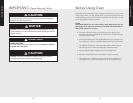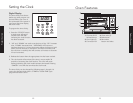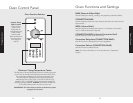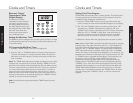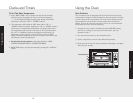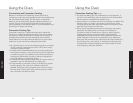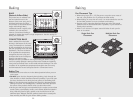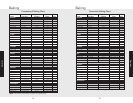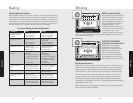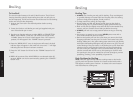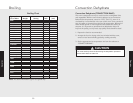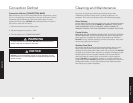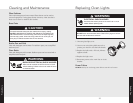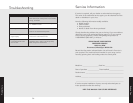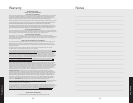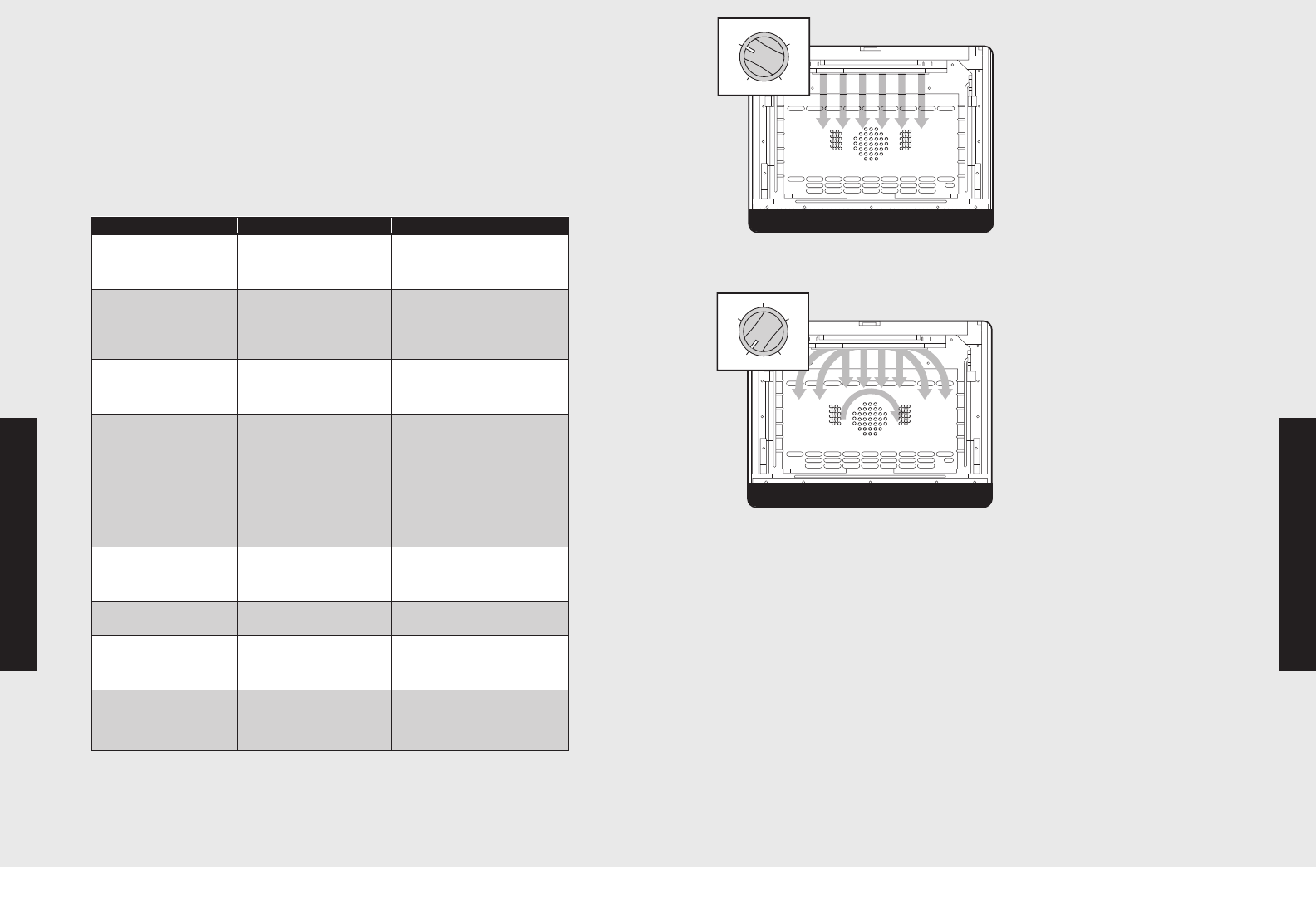
27
Broiling
BROIL (Infrared Broil)
Heat radiates from the Gourmet
Glo™ infrared broiler located at
the top of the oven cavity. The
distance between the foods and
the broil elements determines
broiling speed. For “fast”
broiling, food may be as close
as 2” (5 cm) to the broil element
or on the top rack. “Fast”
broiling is best for meats where
rare to medium doneness is desired. Use this setting for broiling small
and average cuts of meat.
CONVECTION BROIL
(Infrared Convection Broil)
Exactly the same as regular
broiling with the additional
benefit of air circulation by the
motorized fan in the rear of
the oven. Smoke is reduced
since the airflow reduces peak
temperatures on the food. Use
this setting for thick cuts of meat.
Broiling Instructions
Broiling is a dry-heat cooking method using direct or radiant heat. It is
used for small, individualized cuts such as steaks, chops, and patties.
Broiling speed is determined by the distance between the food and
the broil element. Choose the rack position based on desired results.
Conventional broiling is most successful for cuts of meat 1-2 inches
thick and is also more suitable for flat pieces of meat.
Convection
broiling has the advantage of broiling food slightly quicker than
conventional. Convection broiling of meats produces better results,
especially for thick cuts.
The meat sears on the outside and retains more juices and natural
flavor inside with less shrinkage.
infrared broil
OFF
BROIL
BAKE
CONVECTION
BAKE
C
ONVECTION
BROIL
infrared convection broil
OFF
BROIL
B
AKE
CONVECTION
BAKE
CONVECTION
BROIL
26
Operation
Baking
Solving Baking Problems
Baking problems can occur for many reasons. Check the chart below for
the causes and remedies for the most common problems. It is important
to remember that the temperature setting and cooking times you are
accustomed to using with your previous oven may vary slightly from
those required with this oven. If you find this to be true, it is necessary
for you to adjust your recipes and cooking times accordingly.
Problems Cause Remedy
Cakes burned on the 1. Oven was too hot 1. Reduce temperature
sides or not done
2. Wrong pan size 2. Use recom. pan size
in center
3. Too many pans 3. Reduce no. of pans
Cakes crack on top 1. Batter too thick 1. Follow recipe
Add liquid
2. Oven too hot 2. Reduce temperature
3. Wrong pan size 3. Use recom. pan size
Cakes are not level 1. Batter uneven 1. Distribute batter even
2. Oven or rack not level 2. Level oven or rack
3. Pan was warped 3. Use proper pan
Food too brown on 1. Oven door opened 1. Use door window to
bottom too often check food
2. Dark pans being used 2. Use shiny pans
3.
Incorrect rack position
3.
Use recom. rack position
4. Wrong bake setting 4. Adjust to conventional
or convection setting
as needed
5. Pan too large 5. Use proper pan
Food too brown on 1. Rack position too high 1. Use recom. rack position
top
2. Oven not preheated 2. Allow oven to preheat
3. Sides of pan too high 3. Use proper pans
Cookies too flat 1. Hot cookie sheet 1. Allow sheet to cool
between batches
Pies burned around 1. Oven too hot 1. Reduce temperature
edges
2. Too many pans used 2. Reduce no. of pans
3. Oven not preheated 3. Allow oven to preheat
Pies too light on top 1. Oven not hot enough 1. Increase temperature
2. Too many pans used 2. Reduce no. of pans
3.
Oven not preheated
3.
Allow oven to preheat
Common Baking Problems/Remedies
Operation




